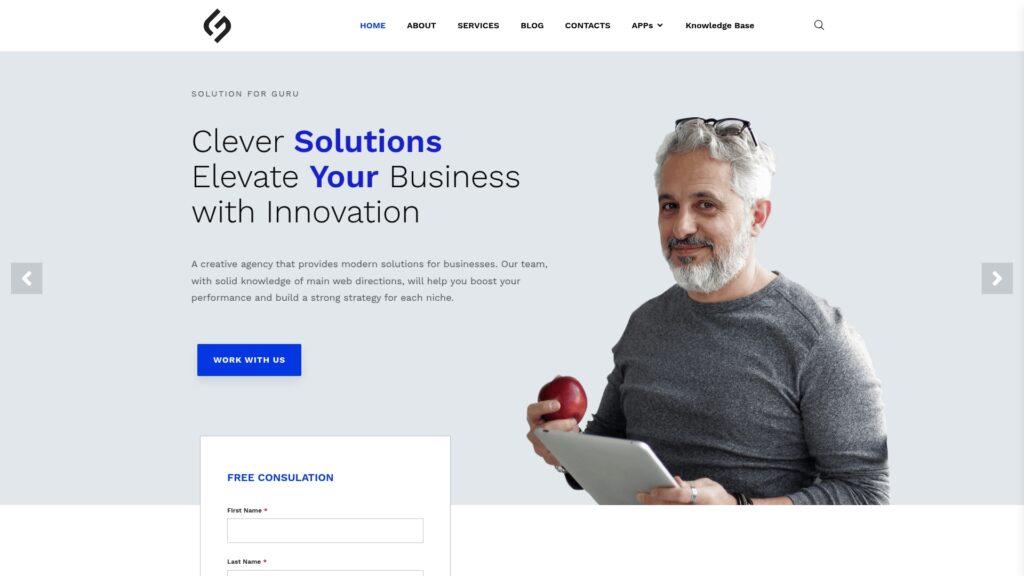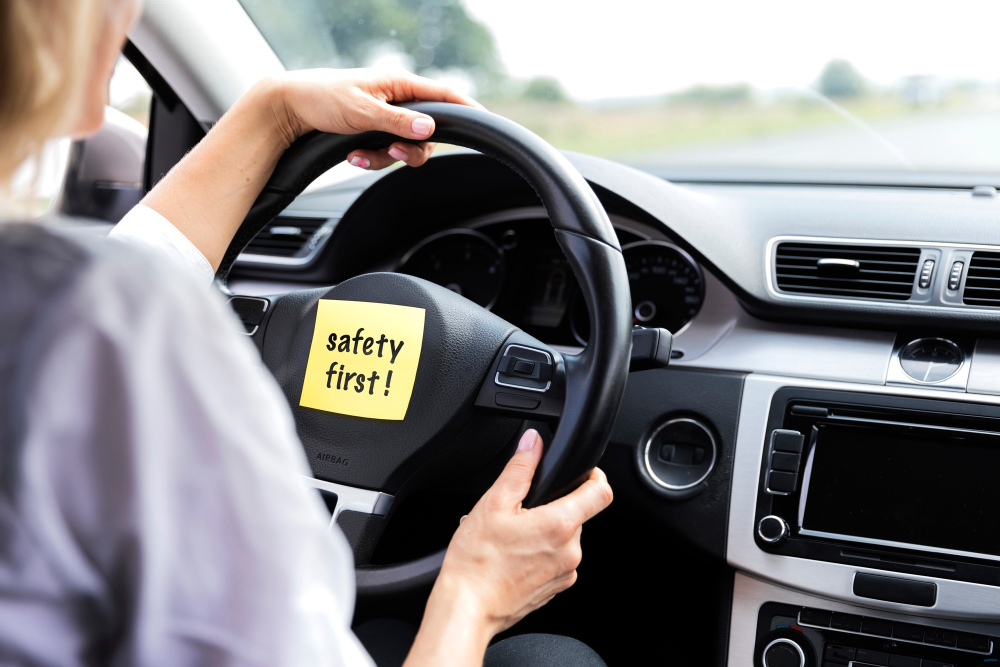What’s Covered and What’s Not: Breaking Down Auto Insurance Coverage Types

Navigating the world of auto insurance can feel like deciphering a foreign language. With numerous coverage types, varying limits, and complex terminology, many drivers find themselves confused about what protection they actually have when they get behind the wheel. Understanding the different types of auto insurance coverage is not just about compliance with state laws—it’s about making informed decisions that protect your financial future and provide peace of mind on the road.
Table of Contents
- Quick Summary
- What Are the Different Types of Auto Insurance Coverage Available?
- Why Is Liability Coverage Considered Essential for Every Driver?
- How Does Collision Coverage Protect Your Vehicle?
- What Does Comprehensive Coverage Actually Cover?
- When Should You Consider Personal Injury Protection?
- How Does Uninsured/Underinsured Motorist Coverage Work?
- What Additional Coverage Options Are Worth Considering?
- How Do Leading Insurance Companies Compare in Coverage Options?
- Factors Influencing Coverage Decisions
- Summing up
- Frequently Asked Questions
- Benefits of Cooperation with Solution for Guru Company
Quick Summary
Auto insurance coverage comes in several distinct types, each designed to protect different aspects of your driving experience. The six primary coverage types include liability coverage (mandatory in most states), collision coverage (protects your vehicle in accidents), comprehensive coverage (protects against non-collision incidents), personal injury protection (covers medical expenses), uninsured/underinsured motorist coverage (protects you from inadequately insured drivers), and optional add-ons like rental reimbursement and roadside assistance. Understanding these coverage types helps you build a policy that matches your needs and budget while ensuring adequate protection on the road.
What Are the Different Types of Auto Insurance Coverage Available?
Auto insurance isn’t a one-size-fits-all product. Instead, it’s a customizable combination of different coverage types that work together to protect you, your passengers, and your vehicle. Understanding these coverage options is the first step toward building an insurance policy that truly meets your needs.
The insurance landscape includes six fundamental coverage types that form the foundation of most auto insurance policies. These coverages can be grouped into two main categories: those that protect other people and property, and those that protect you and your vehicle. Additionally, state requirements vary significantly, with some mandating certain coverages while others leave the decision entirely to the driver.
The Six Core Coverage Types:
| Coverage Type | What It Protects | Typical Requirement |
|---|---|---|
| Liability Coverage | Other people’s property and injuries | Mandatory in most states |
| Collision Coverage | Your vehicle in accidents | Optional (required by lenders) |
| Comprehensive Coverage | Your vehicle from non-collision damage | Optional (required by lenders) |
| Personal Injury Protection | Medical expenses for you and passengers | Mandatory in some states |
| Uninsured/Underinsured Motorist | You when hit by inadequately insured drivers | Mandatory in some states |
| Additional Coverages | Various specific situations | Always optional |
Moreover, the insurance industry continues to evolve, with companies like BiBerk, Progressive, Infinity Auto, and Next – Auto Insurance US offering increasingly flexible coverage options tailored to modern driving habits. For instance, Progressive has pioneered usage-based insurance programs that adjust premiums based on actual driving behavior, while BiBerk specializes in providing comprehensive coverage options for small business vehicles and commercial fleets.
Furthermore, Infinity Auto focuses on serving diverse communities with affordable coverage options and multilingual support, ensuring that all drivers can access the protection they need. Meanwhile, Next – Auto Insurance US leverages technology to streamline the insurance purchasing process, offering instant quotes and digital policy management that appeals to tech-savvy consumers.
Understanding that each coverage type serves a distinct purpose is essential. Consequently, building the right policy requires careful consideration of your personal circumstances, including your vehicle’s value, your financial situation, your state’s legal requirements, and your risk tolerance. The goal is to strike a balance between adequate protection and affordable premiums.
Why Is Liability Coverage Considered Essential for Every Driver?
Liability coverage stands as the cornerstone of auto insurance, and there’s a compelling reason why it’s mandatory in nearly every state. This fundamental coverage type protects you financially when you’re responsible for causing injury to others or damaging their property in an accident. Without it, you could face devastating financial consequences that extend far beyond the immediate cost of the accident itself.
Liability coverage actually consists of two distinct components: bodily injury liability and property damage liability. Bodily injury liability covers medical expenses, lost wages, pain and suffering, and legal fees when you injure someone else in an at-fault accident. Property damage liability, on the other hand, pays for repairs or replacement of other people’s vehicles, buildings, fences, or other property that you damage in an accident.
Liability Coverage Limits Explained:
Most states express liability limits using three numbers, such as 25/50/25, which means:
- $25,000 per person for bodily injury
- $50,000 per accident for bodily injury
- $25,000 per accident for property damage
However, these minimum state requirements often fall far short of providing adequate protection. Medical costs for serious injuries can easily exceed $100,000, and property damage to luxury vehicles or multiple cars can quickly surpass basic limits. Therefore, insurance experts typically recommend much higher liability limits than state minimums.
Progressive offers liability coverage with limits up to 500/500/500 in many states, providing substantial protection for drivers concerned about potential lawsuits. Similarly, BiBerk emphasizes higher liability limits for business vehicle policies, recognizing that commercial drivers face greater exposure to significant claims. Meanwhile, Infinity Auto works with customers to find liability coverage that balances legal compliance with budget constraints, particularly important for cost-conscious drivers.
Additionally, Next – Auto Insurance US provides clear educational resources about liability coverage through their digital platform, helping customers understand exactly what they’re purchasing and why higher limits might be worth the additional premium cost. This transparency enables drivers to make informed decisions rather than simply selecting the cheapest option.
The consequences of inadequate liability coverage can be severe. If you cause an accident that results in damages exceeding your policy limits, you become personally responsible for the difference. This can lead to wage garnishment, property liens, and even bankruptcy in extreme cases. Therefore, carrying sufficient liability coverage isn’t just about legal compliance – it’s about protecting your financial future and assets from potential catastrophic loss.
How Does Collision Coverage Protect Your Vehicle?

While liability coverage protects others from your mistakes, collision coverage protects your own vehicle when accidents occur. This coverage type pays for repairs or replacement of your car when it collides with another vehicle or object, regardless of who caused the accident. Understanding how collision coverage works is crucial for anyone who wants to ensure their vehicle investment remains protected.
Collision coverage applies in numerous scenarios beyond simple car-to-car accidents. It covers damage when you hit a guardrail, tree, telephone pole, or building. It also applies when you roll your vehicle, when another driver hits you and drives away (hit-and-run), and even when you’re struck by an uninsured driver in some situations. Essentially, any accident involving impact with another object or vehicle typically falls under collision coverage.
How Collision Coverage Payouts Work:
The insurance company will pay either the cost to repair your vehicle or its actual cash value (ACV), whichever is less, minus your deductible. For example:
| Scenario | Repair Cost | Vehicle ACV | Deductible | You Receive |
|---|---|---|---|---|
| Minor accident | $3,000 | $15,000 | $500 | $2,500 |
| Major accident | $12,000 | $15,000 | $1,000 | $11,000 |
| Total loss | N/A | $15,000 | $500 | $14,500 |
The deductible represents your out-of-pocket expense before insurance coverage kicks in. Choosing a higher deductible reduces your premium but increases your financial responsibility when accidents occur. Conversely, a lower deductible means higher premiums but less immediate expense after an accident. This decision should reflect your financial situation and risk tolerance.
BiBerk provides collision coverage with flexible deductible options for business vehicles, recognizing that companies need predictable repair costs to maintain their fleet operations. Progressive offers a decreasing deductible feature where your deductible automatically reduces by a set amount for every period you remain accident-free, rewarding safe driving with lower out-of-pocket costs when accidents eventually occur.
Furthermore, Infinity Auto helps customers understand the relationship between vehicle value and collision coverage needs. For older vehicles with limited value, the cost of collision coverage premiums plus the deductible might exceed the vehicle’s worth, making this coverage less financially sensible. In contrast, Next – Auto Insurance US uses advanced algorithms to help customers select appropriate deductibles based on their claims history and financial profile.
One critical consideration with collision coverage is determining when to drop it. As vehicles age and depreciate, there comes a point where maintaining collision coverage becomes financially inefficient. A common rule of thumb suggests dropping collision coverage when your vehicle’s value falls below ten times the annual premium. However, this decision also depends on your ability to replace or repair the vehicle out-of-pocket if necessary.
What Does Comprehensive Coverage Actually Cover?
Despite its name, comprehensive coverage doesn’t cover everything—but it does protect your vehicle from a wide array of non-collision incidents. This coverage type fills the gaps left by collision coverage, protecting your vehicle from damages caused by circumstances outside of typical driving accidents. Understanding the scope of comprehensive coverage helps you appreciate its value as part of a complete auto insurance policy.
Comprehensive coverage protects against numerous perils that could damage or destroy your vehicle. These include theft, vandalism, fire, falling objects, animal collisions, weather events like hail and flooding, and civil disturbances such as riots. Essentially, if something happens to your vehicle while it’s parked or if you hit an animal while driving, comprehensive coverage typically applies.
Common Comprehensive Coverage Claims:
The most frequent comprehensive claims include:
- Windshield damage: Cracks and chips from flying debris represent the single most common comprehensive claim
- Animal collisions: Hitting deer, elk, or other animals causes significant vehicle damage
- Theft: Both vehicle theft and theft of vehicle contents fall under comprehensive coverage
- Weather damage: Hail, flooding, hurricanes, and tornadoes can cause extensive vehicle damage
- Vandalism: Intentional damage to your vehicle by others is covered
- Fire: Both accidental fires and arson are covered events
Like collision coverage, comprehensive coverage requires you to pay a deductible before insurance benefits begin. However, many insurance companies waive the deductible for windshield repairs (though not replacement) in states with zero-deductible glass coverage laws. This encourages drivers to repair small chips before they spread into larger, more expensive cracks.
Progressive, BiBerk, Infinity Auto and Next – Auto Insurance
Progressive offers comprehensive coverage with special endorsements for custom equipment and aftermarket parts, important for drivers who’ve invested in vehicle modifications. BiBerk provides comprehensive coverage for commercial vehicles with consideration for the unique risks businesses face, such as vandalism at job sites or damage from equipment transport. Additionally, Infinity Auto helps customers in areas with specific environmental risks—such as frequent hail or flooding—understand how comprehensive coverage provides essential protection.
Moreover, Next – Auto Insurance US uses sophisticated data analytics to price comprehensive coverage based on actual risk factors in your specific location. For example, if you live in an area with high deer populations, your comprehensive premium might be higher than someone in an urban area where animal collisions are rare. This risk-based pricing ensures that premiums more accurately reflect actual coverage costs.
The relationship between comprehensive and collision coverage is important to understand. Together, they’re often referred to as “full coverage,” though this term is somewhat misleading since they don’t cover everything. Both coverages typically require you to carry them together if you have a car loan or lease, as lenders want to protect their financial interest in your vehicle. However, once your vehicle is paid off, you can choose to drop one or both coverages based on your vehicle’s value and your financial situation.
When Should You Consider Personal Injury Protection?
Personal Injury Protection, commonly known as PIP coverage, represents a significant departure from traditional liability-based insurance models. This coverage type operates on a “no-fault” basis, meaning it pays for your medical expenses and related costs regardless of who caused the accident. Understanding when and why you need PIP coverage is essential for comprehensive protection, especially in states where it’s required or where medical costs pose significant financial risk.
PIP coverage goes beyond simple medical expense reimbursement. It typically covers medical bills, hospital expenses, surgery costs, rehabilitation, and sometimes lost wages, funeral expenses, and even services you can’t perform due to accident-related injuries, such as childcare or housekeeping. The specific benefits vary by state and policy, but PIP generally provides more comprehensive protection than medical payments coverage alone.
What PIP Coverage Typically Includes:
| Covered Expense | Description | Typical Limits |
|---|---|---|
| Medical expenses | Doctor visits, hospital stays, surgery | Up to policy limit |
| Rehabilitation | Physical therapy and rehabilitation services | Included in medical limit |
| Lost wages | Percentage of income lost due to injuries | Usually 80% up to limit |
| Essential services | Household tasks you cannot perform | Varies by policy |
| Funeral expenses | Burial and funeral costs if death occurs | Usually $5,000-$10,000 |
| Survivor benefits | Support for dependents | Varies by policy |
PIP coverage is mandatory in approximately 12 states, often called “no-fault” states. These states require drivers to carry PIP coverage specifically to reduce lawsuits by having each driver’s own insurance cover their medical expenses regardless of fault. In these states, your right to sue another driver for accident-related injuries may be limited unless your injuries exceed certain thresholds defined by state law.
BiBerk offers PIP coverage for business vehicles with consideration for employees who might be injured while driving for work purposes, ensuring that businesses meet their obligations to workers while also complying with state requirements. Progressive provides flexible PIP options in states where it’s mandatory, allowing customers to select coverage limits that match their needs and budgets while meeting legal minimums.
Furthermore, Infinity Auto recognizes that many drivers in PIP-mandatory states may not have comprehensive health insurance, making PIP coverage especially valuable as a primary source of medical expense protection after accidents. Next – Auto Insurance US clearly explains PIP requirements through their digital platform, helping customers in no-fault states understand exactly what coverage they need and why it’s required.
The interaction between PIP coverage and health insurance
The interaction between PIP coverage and health insurance deserves careful consideration. In some cases, PIP serves as primary coverage, paying first before health insurance applies. In other situations, health insurance pays first, with PIP covering deductibles and copayments. Understanding this coordination of benefits helps you avoid paying for duplicate coverage while ensuring you have adequate protection.
Even in states where PIP isn’t mandatory, it may still be available as an optional coverage. Drivers without health insurance, those with high-deductible health plans, or self-employed individuals who could face significant income loss from accident-related injuries should seriously consider adding PIP coverage to their policies. The relatively modest cost often provides substantial value, particularly when compared to potential out-of-pocket medical expenses following a serious accident.
How Does Uninsured/Underinsured Motorist Coverage Work?
Despite legal requirements for auto insurance in virtually every state, millions of drivers operate vehicles without adequate coverage. Some carry no insurance at all, while others maintain only minimum liability limits that prove insufficient when serious accidents occur. Uninsured/Underinsured Motorist (UM/UIM) coverage protects you when these inadequately insured drivers cause accidents that result in your injuries or vehicle damage.
Uninsured motorist coverage provides protection when you’re hit by a driver with no insurance or by a hit-and-run driver who cannot be identified. Underinsured motorist coverage applies when the at-fault driver has insurance but their liability limits are insufficient to cover your damages. Together, these coverages ensure you’re not left financially vulnerable due to another driver’s poor decisions or insufficient coverage.
UM/UIM Coverage Components:
This protection typically includes two parts:
- Uninsured/Underinsured Motorist Bodily Injury (UMBI/UIMBI): Covers medical expenses, lost wages, pain and suffering, and other injury-related costs when an uninsured or underinsured driver causes an accident
- Uninsured/Underinsured Motorist Property Damage (UMPD/UIMPD): Pays for vehicle repairs or replacement when hit by an uninsured or underinsured driver (not available in all states)
The mechanics of underinsured motorist coverage can be complex. Suppose you’re injured in an accident caused by a driver with 25/50/25 liability limits, but your medical expenses and other damages total $75,000. If you carry UIM coverage with 100/300 limits, your insurance would pay the difference between the at-fault driver’s coverage ($25,000) and your actual damages, up to your UIM limit. In this case, you’d receive $25,000 from the at-fault driver’s insurance and up to $50,000 from your own UIM coverage.
Progressive, BiBerk, Infinity Auto and Next – Auto Insurance
Progressive recommends that customers carry UM/UIM limits matching or exceeding their liability coverage limits, ensuring consistent protection whether you cause an accident or are the victim of one. BiBerk emphasizes UM/UIM coverage for business vehicle policies, recognizing that companies cannot afford to have employees unable to work due to injuries caused by uninsured drivers. Similarly, Infinity Auto provides affordable UM/UIM options for budget-conscious drivers, recognizing that this coverage provides essential protection against a significant and growing risk.
Moreover, Next – Auto Insurance US uses data analytics to show customers the percentage of uninsured drivers in their state and local area, helping them understand the actual risk they face and why UM/UIM coverage represents a wise investment. This transparent, data-driven approach helps customers make informed decisions based on actual risk rather than assumptions.
The prevalence of uninsured drivers varies dramatically by state, ranging from less than 5% in some states to more than 20% in others. Even in states with relatively low rates of uninsured drivers, the absolute number of uninsured motorists on the road means you face a significant risk of encountering one during your driving lifetime. Consequently, UM/UIM coverage provides essential protection that no responsible driver should overlook.
Some states mandate UM/UIM coverage, while others make it optional but require insurance companies to offer it. Even when optional, this coverage typically costs relatively little compared to the protection it provides. For drivers carrying higher liability limits, matching UM/UIM limits ensures symmetrical protection, meaning you have the same level of financial protection whether you cause an accident or are the victim of one.
What Additional Coverage Options Are Worth Considering?

Beyond the core coverage types, insurance companies offer numerous optional endorsements and additional coverages designed to address specific needs and situations. While these add-ons increase your premium, many provide valuable protection or convenience that justifies the additional cost. Understanding these options helps you customize your policy to match your unique circumstances and priorities.
Rental Reimbursement Coverage pays for a rental car while your vehicle is being repaired after a covered claim. This coverage typically has daily and total claim limits, such as $30 per day with a $900 maximum per claim. For drivers who depend on their vehicle for work or lack alternative transportation, this coverage provides essential mobility during the repair period.
Roadside Assistance provides help when your vehicle breaks down, including towing, battery jump-starts, flat tire changes, fuel delivery, and lockout services. Many insurance companies offer this coverage for a small annual fee, often much less than the cost of a single towing incident. This proves especially valuable for drivers of older vehicles or those who frequently travel in areas with limited services.
Gap Insurance addresses the gap between your vehicle’s actual cash value and the amount you owe on your loan or lease. Since new vehicles depreciate rapidly, you can quickly owe more than your car is worth. If your vehicle is totaled, standard comprehensive and collision coverage pays only the actual cash value, potentially leaving you responsible for thousands of dollars on a vehicle you no longer possess. Gap insurance eliminates this risk.
Additional Coverage Options:
| Coverage Type | What It Provides | Best For |
|---|---|---|
| Rental Reimbursement | Rental car during repairs | Daily drivers without backup vehicle |
| Roadside Assistance | Towing and emergency services | All drivers, especially older vehicles |
| Gap Insurance | Loan/lease balance protection | New vehicle owners with small down payments |
| Custom Equipment | Coverage for aftermarket parts | Modified or customized vehicles |
| Rideshare Coverage | Protection during rideshare driving | Uber/Lyft drivers |
| New Car Replacement | New car value after total loss | Luxury or new vehicle owners |
Custom Equipment Coverage protects aftermarket parts and modifications not covered under standard policies. If you’ve invested in a premium sound system, custom wheels, performance upgrades, or aesthetic modifications, this coverage ensures you’re reimbursed for these enhancements if your vehicle is damaged or stolen.
Rideshare Coverage fills the insurance gap for Uber, Lyft, and other rideshare drivers. Personal auto policies typically don’t cover accidents that occur while you’re driving for business purposes, and rideshare company insurance only applies in certain situations. Rideshare coverage ensures continuous protection throughout your driving activities.
New Car Replacement Coverage pays the cost of a brand-new vehicle (rather than depreciated actual cash value) if your new car is totaled within a specified period, usually the first year. This coverage particularly benefits those who purchase luxury vehicles or make small down payments, situations where standard coverage might not provide sufficient funds to purchase a comparable replacement.
Progressive, BiBerk, Infinity Auto and Next – Auto Insurance
BiBerk specializes in commercial coverage additions for business vehicles, including higher limits for rental reimbursement and equipment coverage for tools and materials transported in vehicles. Progressive pioneered many modern coverage options, including comprehensive rideshare insurance that protects drivers throughout all phases of their rideshare activities. Additionally, Infinity Auto offers affordable roadside assistance packages that provide essential services without dramatically increasing premiums.
Next – Auto Insurance US presents all available coverage options through their intuitive digital interface, clearly explaining what each covers, typical costs, and personalized recommendations based on your vehicle, driving patterns, and circumstances. This transparency and customization help customers build policies that truly meet their needs without paying for unnecessary coverage.
When evaluating additional coverage options, consider your specific circumstances, including your vehicle’s age and condition, your financial situation, your driving patterns, and your tolerance for inconvenience versus cost. Not every driver needs every coverage option, but identifying which additional coverages address your specific vulnerabilities can provide valuable peace of mind at a reasonable cost.
How Do Leading Insurance Companies Compare in Coverage Options?
The auto insurance marketplace features numerous providers, each with unique strengths, specialties, and approaches to coverage. Understanding how leading companies like BiBerk, Progressive, Infinity Auto, and Next – Auto Insurance US differ in their offerings, pricing models, and customer service approaches helps you identify which provider might best meet your specific needs and preferences.
BiBerk

BiBerk distinguishes itself through specialization in small business and commercial vehicle insurance. While many insurance companies treat business vehicle coverage as an afterthought or extension of personal auto policies, BiBerk designs their products specifically for the unique needs of small businesses, contractors, and commercial fleets. Their coverage options address common business vehicle scenarios, including employees driving company vehicles, tools and equipment transport, and higher liability exposures associated with commercial use.
The company offers flexible coverage limits, understanding that business vehicles often require higher protection levels than personal vehicles. Furthermore, BiBerk provides streamlined claims processes designed to minimize business disruption, recognizing that commercial vehicle downtime directly impacts business operations and revenue. Their digital-first approach also simplifies policy management for busy business owners who need efficient administration without sacrificing coverage quality.
Progressive

Progressive stands as one of the largest and most innovative auto insurers in the United States, known for pioneering usage-based insurance and discount programs. Their Snapshot program revolutionized the industry by offering premium discounts based on actual driving behavior rather than demographic factors alone. This technology-driven approach appeals to safe drivers who want their premiums to reflect their low-risk behavior.
Progressive offers comprehensive coverage options with high limit availability, making them suitable for drivers seeking substantial protection. Their bundling opportunities, including home insurance combinations, provide additional savings for customers consolidating their insurance needs. Moreover, Progressive’s extensive agent network combined with direct purchase options gives customers flexibility in how they research, purchase, and manage their coverage.
Infinity Auto

Infinity Auto focuses on serving diverse communities and providing accessible, affordable coverage to drivers who might face challenges obtaining insurance elsewhere. The company offers multilingual customer service, flexible payment options, and simplified policy structures that make insurance more accessible to non-native English speakers and those unfamiliar with complex insurance terminology.
Infinity Auto’s approach recognizes that not all drivers have the same needs, circumstances, or financial resources. They work with customers to build policies that meet state requirements while remaining affordable, often serving as a crucial insurance option for price-sensitive drivers or those with less-than-perfect driving records. Their extensive network of local agents provides personalized service and education, helping customers understand their coverage and make informed decisions.
Next – Auto Insurance

Next – Auto Insurance US represents the newest wave of insurance technology, leveraging digital platforms and data analytics to streamline the insurance purchasing process. Their entirely online approach eliminates traditional agent interactions, instead using sophisticated algorithms and clear digital interfaces to guide customers through coverage selection. This model reduces overhead costs, potentially translating to lower premiums for customers.
The company provides instant quotes, immediate policy binding, and comprehensive digital policy management through mobile apps and web platforms. Their use of extensive data sources enables more accurate risk assessment and personalized pricing, potentially offering better rates to good drivers than traditional rating methods might provide. Moreover, their educational resources and transparent explanations help customers understand what they’re purchasing without requiring insurance expertise.
Coverage Comparison Matrix:
Choosing between these providers depends on your specific priorities. Business owners with commercial vehicles should seriously consider BiBerk’s specialized approach, while drivers who want usage-based pricing and extensive bundling options might prefer Progressive. Those seeking personalized, multilingual service and affordable options may find Infinity Auto most appropriate, whereas digital-native consumers who value convenience and technology might gravitate toward Next – Auto Insurance US.
Beyond coverage options and pricing, consider factors like financial strength ratings, customer satisfaction scores, claims handling reputation, and the availability of local agents versus digital-only support. Each of these companies maintains strong financial ratings and legitimate operations, but their approaches to customer service, claims processing, and policy management differ substantially. Matching these characteristics to your preferences and needs ensures a satisfactory long-term relationship with your chosen insurance provider.
Factors Influencing Coverage Decisions
Consider these elements when determining appropriate coverage levels:
- State minimum requirements: Legal requirements establish your baseline coverage
- Lender requirements: Loan and lease agreements mandate specific coverage types and limits
- Personal assets: Your net worth determines how much protection you need
- Vehicle value: Your car’s worth influences collision and comprehensive decisions
- Risk tolerance: Your comfort with financial uncertainty affects coverage choices
- Driving patterns: Mileage, commuting, and driving conditions impact risk exposure
- Financial cushion: Your emergency fund affects deductible selection
- Income stability: Your employment situation influences lost wage coverage needs
Summing up
Understanding auto insurance coverage types empowers you to make informed decisions that protect both your financial security and peace of mind on the road. The six core coverage types—liability, collision, comprehensive, personal injury protection, uninsured/underinsured motorist, and additional optional coverages – work together to create a comprehensive protection framework that addresses the various risks drivers face daily.
Liability coverage forms the foundation of every policy, protecting your assets when you cause harm to others. Meanwhile, collision and comprehensive coverage protect your vehicle investment from accidents and unexpected events. Personal injury protection ensures access to medical care and income replacement regardless of fault, while uninsured/underinsured motorist coverage protects you from the negligence or poor decisions of inadequately insured drivers. Together, these coverages create layers of protection addressing different aspects of automotive risk.
Selecting appropriate coverage levels requires careful consideration of your assets, vehicle value, driving patterns, financial cushion, and personal circumstances. Rather than defaulting to state minimum requirements or choosing coverage based solely on premium cost, thoughtful evaluation of your specific needs and vulnerabilities enables you to build a policy that truly protects your interests. This personalized approach ensures you’re neither over-insured and wasting money nor under-insured and exposed to catastrophic financial risk.
The investment in proper auto insurance coverage extends beyond legal compliance – it represents a commitment to protecting your financial future, ensuring access to necessary medical care following accidents, and maintaining your ability to continue working and supporting your family even when unexpected events occur. Whether you choose BiBerk for commercial coverage expertise, Progressive for innovative programs and extensive options, Infinity Auto for accessible and affordable protection, or Next – Auto Insurance US for digital convenience and advanced analytics, the key is understanding what you’re purchasing and ensuring your coverage matches your actual needs.
Frequently Asked Questions
Coverage costs vary dramatically based on numerous factors, including your location, driving record, vehicle type, coverage limits, and deductibles. Liability coverage typically represents the least expensive component, often costing $300-$800 annually for minimum state limits, while higher recommended limits might cost $600-$1,500 or more. Collision and comprehensive coverage costs depend heavily on your vehicle’s value and your chosen deductible, typically ranging from $500-$2,000 combined for newer vehicles. Personal injury protection adds $50-$300 to annual premiums in states where it’s required, while uninsured/underinsured motorist coverage usually costs $100-$400 annually. Additional coverages like rental reimbursement ($30-$60 annually) and roadside assistance ($20-$100 annually) add modest amounts. Your total premium reflects the combination of all selected coverages, with the average American paying approximately $1,500-$2,000 annually for a standard policy. However, individual quotes vary significantly based on personal risk factors.
Yes, most insurance companies allow you to customize coverage for each vehicle on your policy, recognizing that different vehicles have different values and uses. For example, you might carry comprehensive and collision coverage with low deductibles on a new luxury vehicle while dropping these coverages entirely on an older, low-value vehicle that you drive infrequently. However, liability coverage typically applies at the policy level rather than per vehicle, meaning all vehicles on your policy share the same liability limits.
This flexibility proves particularly valuable for families with multiple vehicles of varying ages and values. You can maximize coverage on vehicles where it makes financial sense while reducing costs on vehicles where comprehensive protection isn’t justified by the vehicle’s value. BiBerk offers this flexibility for business fleets, allowing companies to carry different coverage levels on various commercial vehicles based on their value and usage.
Benefits of Cooperation with Solution for Guru Company
Navigating the complex world of auto insurance requires expertise, attention to detail, and staying current with constantly evolving insurance products and regulations. Solution for Guru (https://www.solution4guru.com/) specializes in providing comprehensive insurance guidance and support, helping individuals and businesses make informed decisions about their coverage needs.
The company offers personalized insurance consultations that go beyond generic advice, analyzing your specific circumstances, assets, driving patterns, and risk exposure to recommend coverage levels that truly protect your interests. Their experts understand the nuances of different insurance carriers, including the specialized strengths of BiBerk for commercial coverage, Progressive‘s innovative programs, Infinity Auto‘s accessible options, and Next – Auto Insurance US‘s digital convenience.

Moreover, Solution for Guru provides ongoing policy reviews as your circumstances change, ensuring your coverage evolves with your life stages, vehicle changes, and shifting risk exposures. Their independent approach means they work for you rather than any particular insurance company, providing objective guidance focused entirely on your best interests. Whether you’re purchasing your first auto insurance policy, insuring a business fleet, or optimizing coverage for multiple family vehicles, Solution for Guru delivers the expertise and personalized attention that results in optimal protection at competitive rates.
Their services include policy comparison analysis, claims advocacy, coverage gap identification, and educational resources that empower you to understand your insurance rather than simply purchasing it blindly. In an insurance marketplace that can feel overwhelming and confusing, Solution for Guru serves as your trusted advisor, ensuring you’re neither over-insured and wasting money nor under-insured and exposed to catastrophic financial risk.
Recommended
- What Are the Best Auto Insurance Options for Rideshare Drivers (Uber, Lyft, etc.)?
- How to Get Affordable Auto Insurance After an Accident or Ticket
- Auto and Renters Insurance Bundle
- Preferred Auto Insurance Companies
- How to Get Auto Insurance Online
- Auto Insurance for Farms
- Auto International Insurance
- Comparing Commercial Auto Insurance
- The Top Commercial Auto Insurance Options



